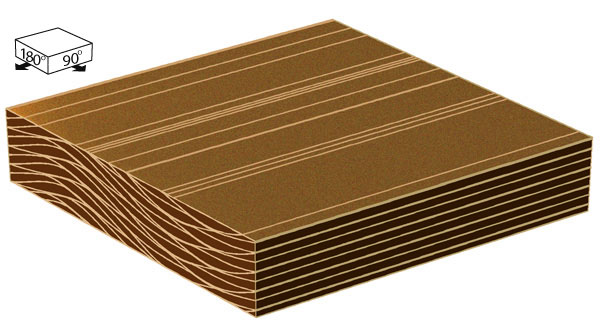Pacific Coastal and Marine Science Center
Bedform Sedimentology Site: “Bedforms and Cross-Bedding in Animation”


FIG. 18. Structure formed by bedforms that reverse asymmetry without net displacement.
RECOGNITION: In many natural flows, reversals in asymmetry commonly occur simultaneously with reversals in migration direction because both kinds of reversals are caused by reversals in flow direction. These two responses are simulated separately, because, for reasons discussed below, the two kinds of bedform reversals can occur independently in some flows. The structure shown here is similar to those produced by bedforms that reverse migration direction (FIG. 19); both have erosion surfaces that are arranged in vertically zig-zagging sequences. The two kinds of structures can be distinguished, however, because reversals in asymmetry (shown here) cause cross-beds to offlap and onlap the erosion surfaces, whereas reversals in migration direction (FIG. 19) produce erosion surfaces with relatively concordant overlying beds. Reversals in asymmetry also produce zig-zags in the centers of the bedform troughs, a feature that is not produced by reversals in migration direction. Vertical profiles of cross-bed dips vary with location in this structure. Profiles through crest or trough deposits have cross-bed dips that reverse direction, whereas dips through flank deposits vary only in inclination.
ORIGIN: The response of bedforms to reversing flows is a complicated problem because flow reversals can occur on more than one time scale in a single flow, and the different scales of flow reversals have different effects on the bedforms. Some flow reversals can cause reversals in asymmetry without net migration, and other flow reversals can cause reversals in migration direction without causing significant asymmetry. For example, in oscillatory flows where the volume of sediment transported during each oscillation approaches the volume of sediment in the bedforms, the bedforms will reverse asymmetry. Where such an oscillatory flow is symmetrical, the bedforms will not undergo net migration. In contrast, where the volume of sediment transported during individual oscillations is small relative to the volume in the bedforms, the bedforms maintain a symmetrical profile. Inducing a slight asymmetry to the oscillatory flow will cause the bedforms to migrate while maintaining a relatively symmetrical profile, and reversing the direction of net asymmetry in the flow will cause the nearly symmetrical bedforms to reverse migration direction. Distinguishing the structures formed by the different kinds of bedform reversals (asymmetry or migration direction) is, therefore, important because the structures indicate flow reversals on different time scales. Real examples of structures indicating flow reversals on more than one time scale are shown in Figures 20 and 64. The structure shown in this computer image was produced by vertically climbing bedforms. The structure is relatively rare for the same reasons that other vertically climbing bedforms are rare (FIG. 3). Even in oscillatory flows that might be expected to produce structures like the one shown here, sand transport in opposing directions tends to be imbalanced, thereby causing bedforms to migrate (Newton, 1968). Bagnold (1941) predicted that longitudinal dunes would have the kind of internal structure illustrated in this example, but eolian deposits having this structure have been rarely if ever documented in the geologic record (Rubin and Hunter, 1985). This kind of structure, however, could be expected to form in convergence zones in reversing flows such as might occur at isolated locations on some tidal ridges, at eddy-reattachment zones along river banks, at restricted locations in fields of linear eolian dunes or symmetrical sand waves, or at restricted sites in wave-generated flows.